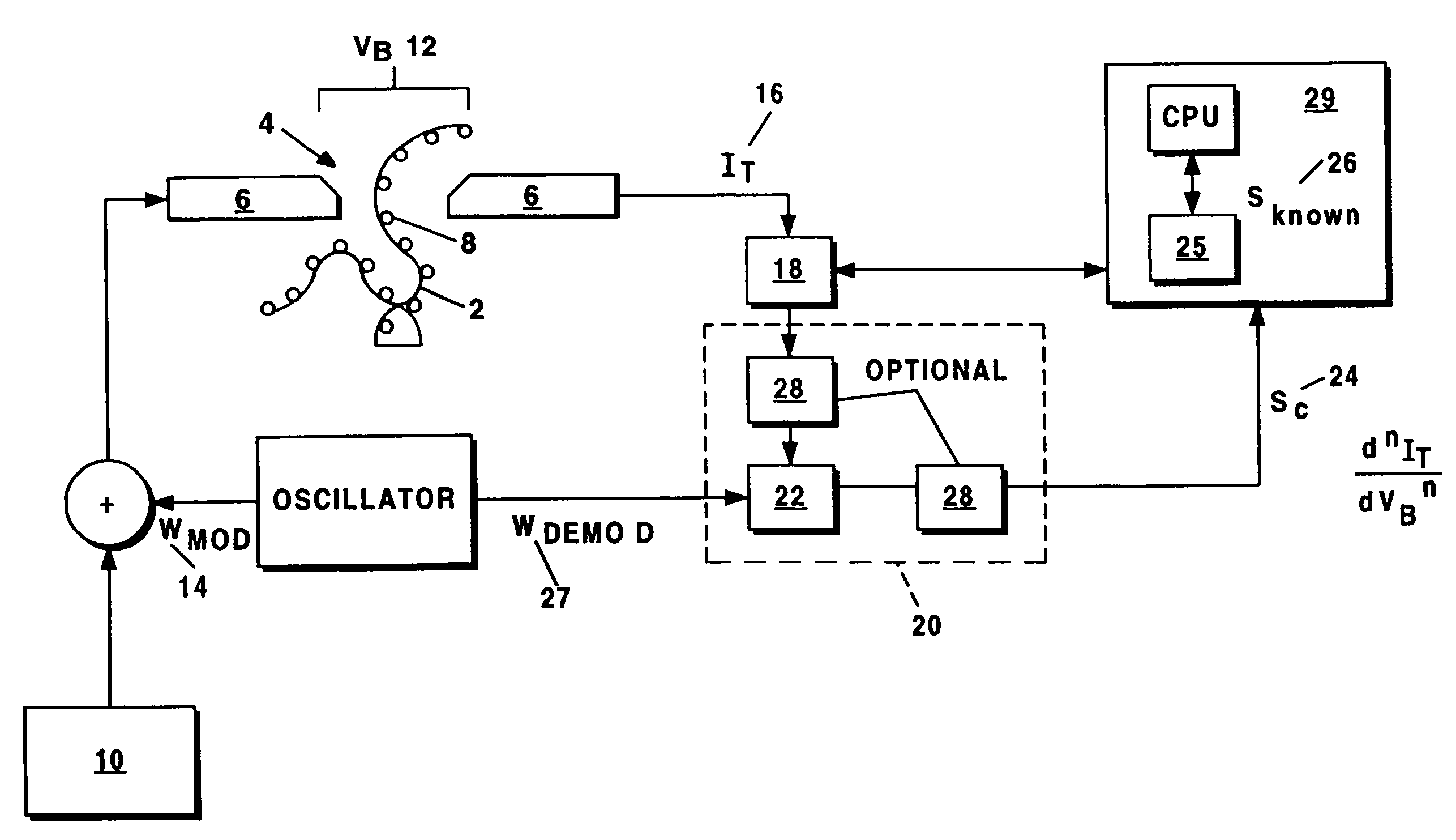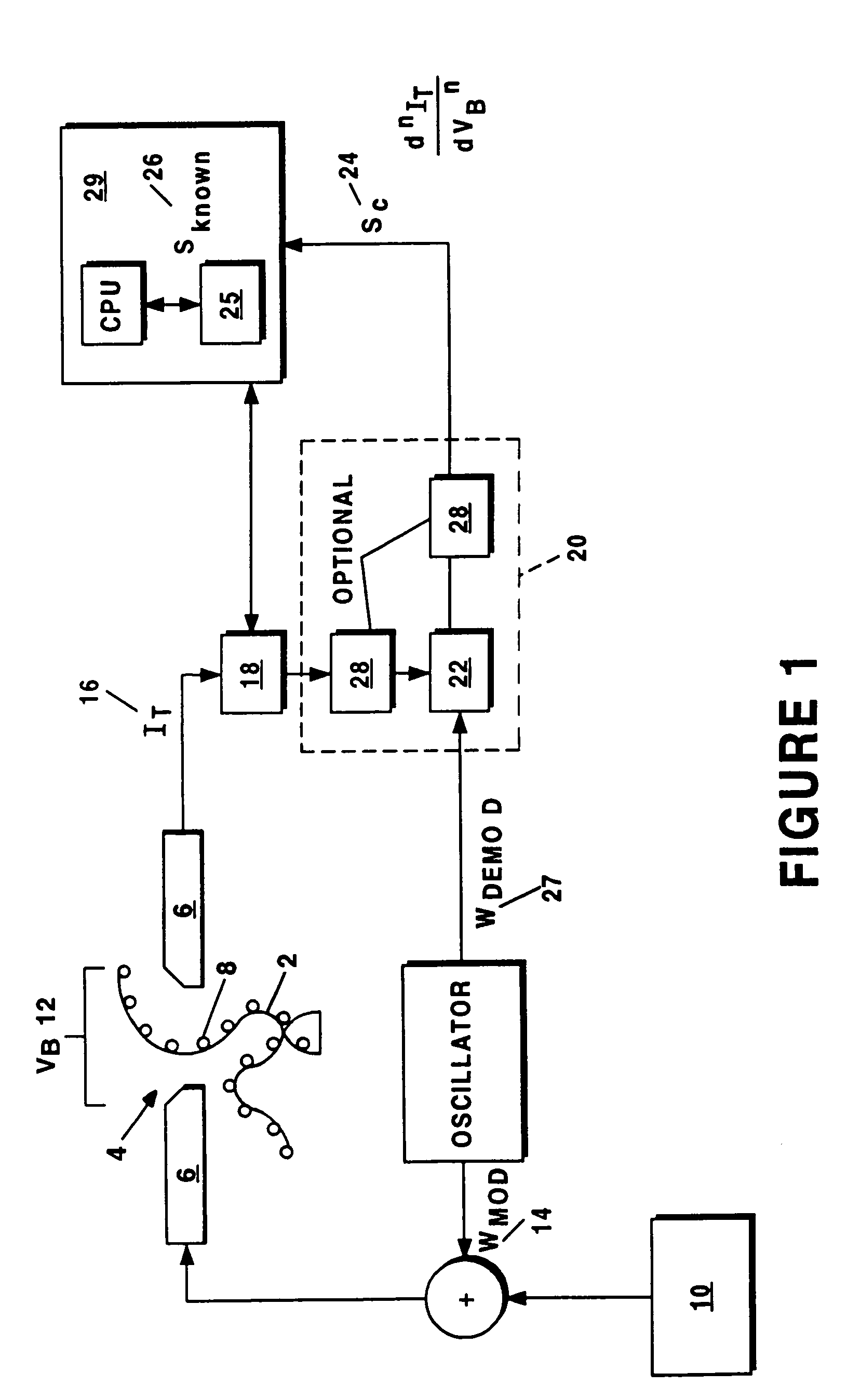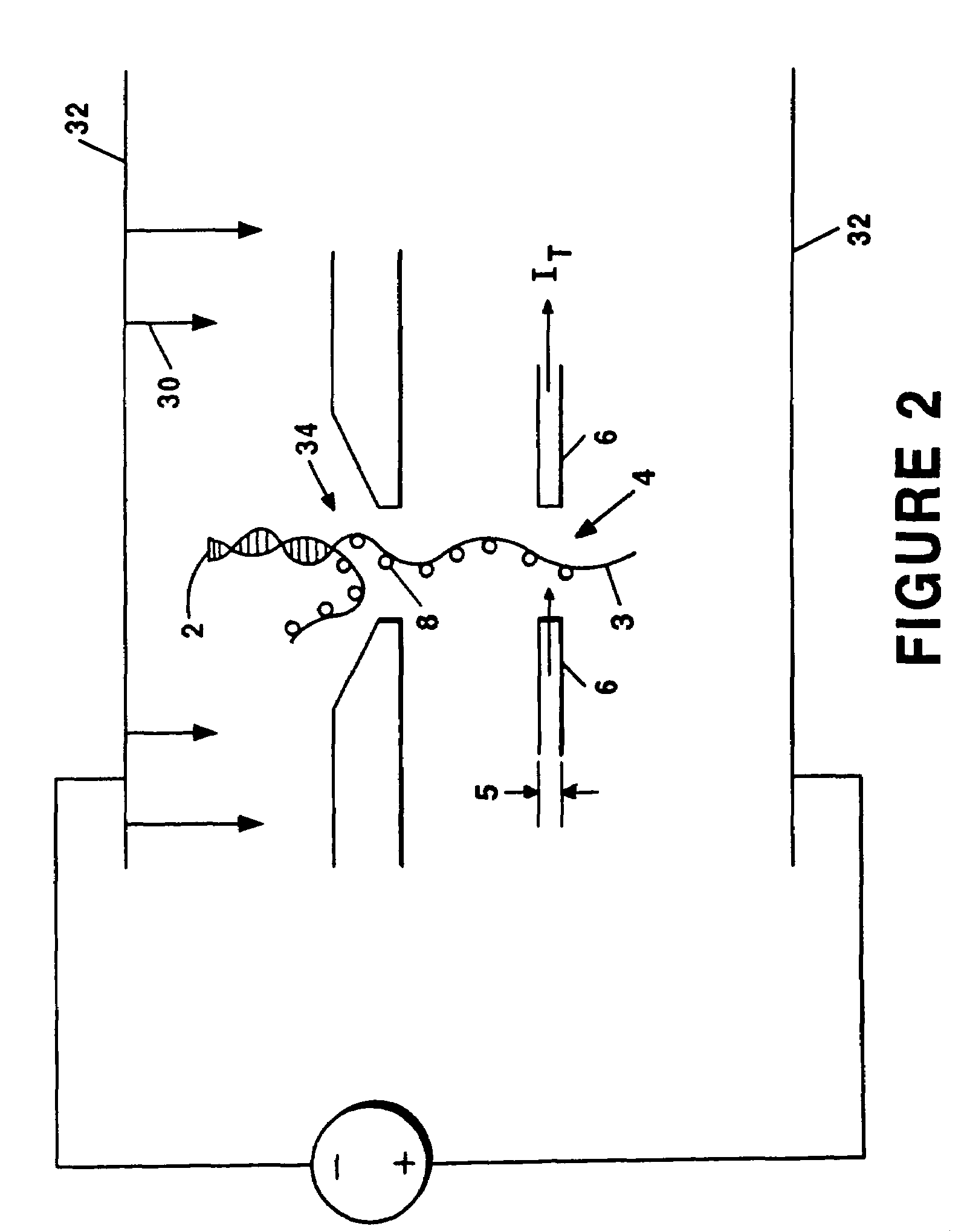Method and apparatus for sequencing polymers through tunneling conductance variation detection
a technology of conductance variation and sequencing method, which is applied in the field of identifying molecules in a polymer chain, can solve the problems of slow and laborious methods, inability to perform mass spectroscopy and elida sequencing on very short polymers, and inability to achieve high-speed sequencing, improve the signal to noise ratio of acquired signals, and reduce analysis costs
- Summary
- Abstract
- Description
- Claims
- Application Information
AI Technical Summary
Benefits of technology
Problems solved by technology
Method used
Image
Examples
Embodiment Construction
[0025]The present invention provides systems and methods for sequencing polymers. With reference to FIG. 1 (which is not drawn to scale), a preferred embodiment of the present invention involves urging the polymer 2 in solution across a channel 4 between a pair of nano-electrodes 6 one molecule 8 at the time, and using a conventional signal generator 10 to center a bias voltage VB 12 across the electrodes 6 that corresponds to the energy difference between any two of the internal energy levels of the molecule 8 of interest. A modulation waveform WMOD 14 is then applied to the bias voltage VB 12. A tunneling current IT 16 traversing the channel 4 through the molecule 8 is acquired by a sensor 18 (e.g., a current sensor) and relayed to signal processing equipment 20, which can include a lock-in amplifier and / or phase sensitivity detector. The acquired tunneling current IT 16 is then demodulated by demodulator 22 in order to derive a characteristic signal SC 24
[0026](ⅆnITⅆVBn)
that can...
PUM
| Property | Measurement | Unit |
|---|---|---|
| diameter | aaaaa | aaaaa |
| bias voltage | aaaaa | aaaaa |
| electrical | aaaaa | aaaaa |
Abstract
Description
Claims
Application Information
 Login to View More
Login to View More - R&D
- Intellectual Property
- Life Sciences
- Materials
- Tech Scout
- Unparalleled Data Quality
- Higher Quality Content
- 60% Fewer Hallucinations
Browse by: Latest US Patents, China's latest patents, Technical Efficacy Thesaurus, Application Domain, Technology Topic, Popular Technical Reports.
© 2025 PatSnap. All rights reserved.Legal|Privacy policy|Modern Slavery Act Transparency Statement|Sitemap|About US| Contact US: help@patsnap.com



